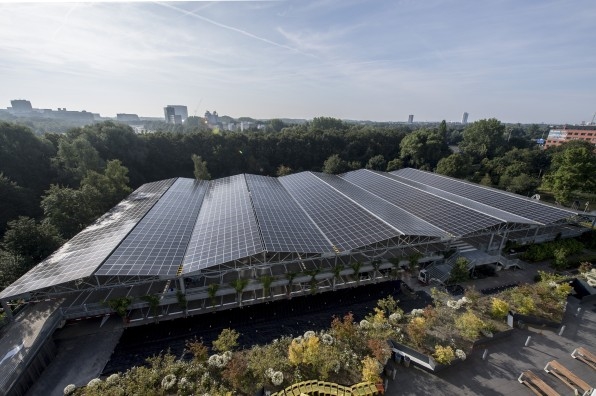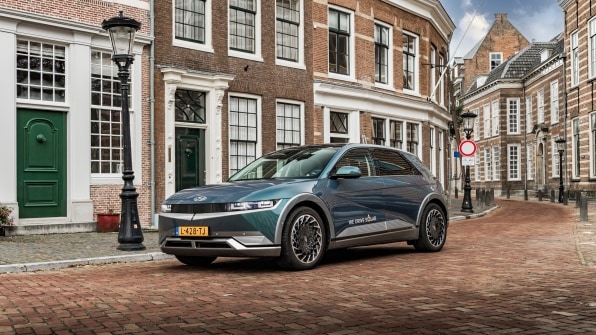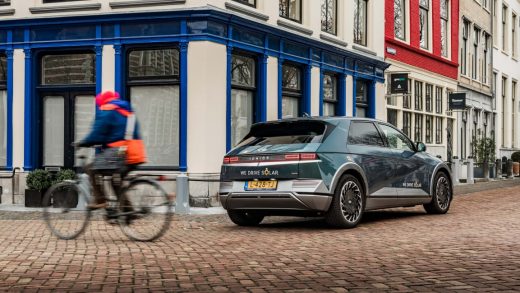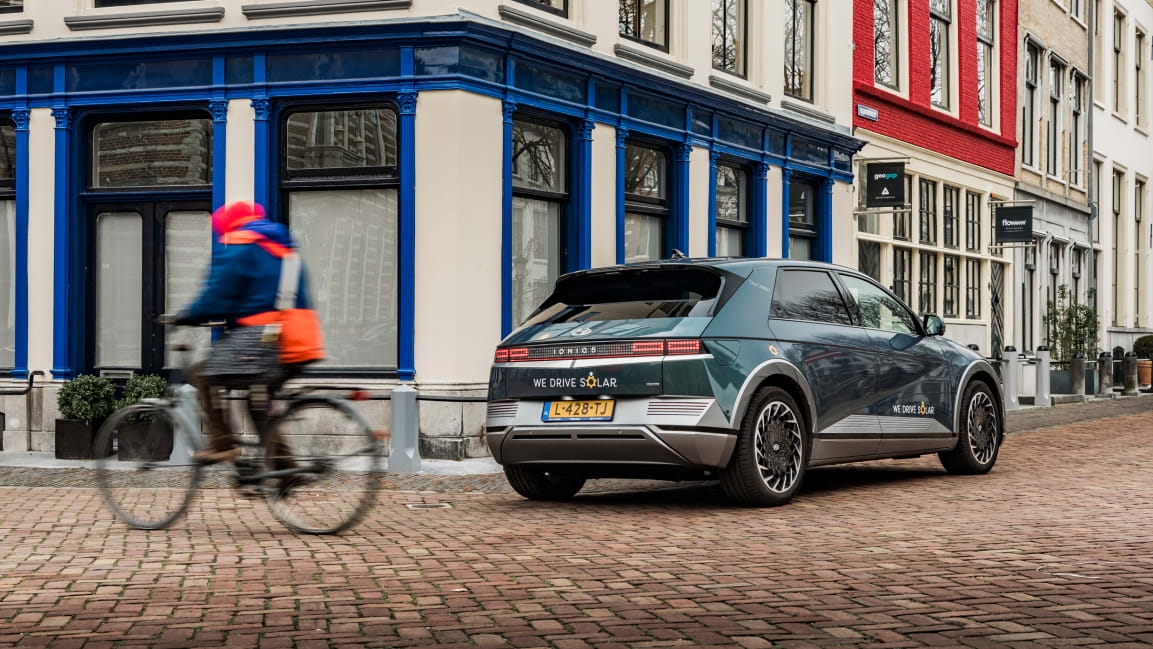Utrecht wants to be the first city to use its electric car fleet as a giant battery
On a sprawling sunroof over a parking lot next to an office building in the Dutch city of Utrecht, there are now more than 2,000 solar panels. Underneath, there are 250 “bidirectional” chargers for electric cars, so that in the future, cars parked in the lot can help store that solar power for the grid.
The city aims to be the first in the world to be fully bidirectional, using electric car batteries to help solve one of the challenges of renewable energy: Solar and wind power aren’t always available, and building large batteries for storage is still expensive. As more people shift to EVs, the cars can double as grid infrastructure.

“We basically see two mega trends: We’ve now seen enormous growth of renewable energy generation, and at the same time, an enormous growth of the number of electric cars coming to the market and being rolled out,” says Robin Berg, the director of We Drive Solar, the organization building and managing new network of bidirectional chargers. “So for the energy transition to go well, and to be effective without a huge investment by grid operators and other storage facilities, really the way forward is to combine those two trends. And to basically enable the batteries and cars to be a buffer for renewable energy to balance the system.”
In the parking lot, which belongs to the insurance company a.s.r., the solar panels will send electricity both to the office building and to the cars when the sun is shining. When it’s dark, the cars’ batteries reverse, sending energy to the building, so the office can keep running on solar, while using software to manage the energy demand. (The insurance company helped fund the installation, and partners like the nearby University of Twente are helping test the performance of the system.) The approach takes pressure off the broader electric grid. “We really see this as a whole grid-based solution, where you have cars in different locations providing local flexibility, but also flexibility to the whole grid,” he says. “So you get a very smart system overall.”
Hundreds of additional bidirectional chargers have been installed in other parts of the city, and thousands more will be added. But there are still major hurdles to overcome: current electric cars aren’t yet capable of sending power back into the grid or a building on command, so the system can’t work until the technology is updated. But the organization is working with multiple car companies that will soon roll out the technology. Hyundai’s Ioniq 5, which supports bidirectional charging, will launch in 2022, and a public car-sharing fleet of 150 of the cars will be added in Utrecht.

Once the cars are in place, We Drive Solar will be tracking how using the system affects the cars’ batteries, but it’s likely that it will help, not hurt, the cars. “We won’t drain the whole battery,” he says. “We will just take out some power and put some power back, and this up-and-down process is not a whole cycle. It’s especially the whole cycles that are causing the battery to degrade sooner.”
The University of Utrecht calculated that with 10,000 electric cars using bidirectional charging, it will be possible to balance the city’s entire electricity needs. That’s less than 10% of the city’s current fleet of cars; EVs are quickly growing, and the Netherlands plans to ban sales of new gas and diesel cars beginning in 2030.
In Utrecht, electric cars are only part of the strategy for decarbonization. The rate of car ownership is already far lower than in the U.S. The city has the world’s largest bike parking garage, one of the world’s best networks of bike lanes, and plans for a new car-free neighborhood for 20,000 people. But it doesn’t expect cars to disappear completely—and they can be put to better use in the 95% of the time they sit parked and aren’t in use.
Fast Company , Read Full Story
(32)



